The popularity of mental hospitals grew at an alarming rate between 1825 and 1865, and that wasn’t even the peak. Mental hospitals used techniques they thought would cure the patients but are considered torture by today’s standards.
Thankfully, during the 1950s, light was being shed on the wrongdoings at these facilities, and most of them closed before the start of the 21st century.
What has happened to the abandoned mental hospitals?
Many of the abandoned mental hospitals have been saved as historic sites. You can book historic tours and ghost hunting tours at most of them. Some people even visit to see the beautiful architecture that was lost on the patients of the buildings.
Rolling Hills Asylum: East Bethany, New York
Rolling Hills Asylum opened in 1826 as a poor house. It was a place for orphans, the elderly, alcoholics, criminals, and the homeless. No matter the reason for living here, everyone was referred to as an inmate.
This poorhouse was a functioning farm. Growing their food, and raising their animals helped to offset the cost of keeping each “inmate”. It only cost about $1.08 a week for each person living at the house. In 2021, that’s about $30 after inflation.
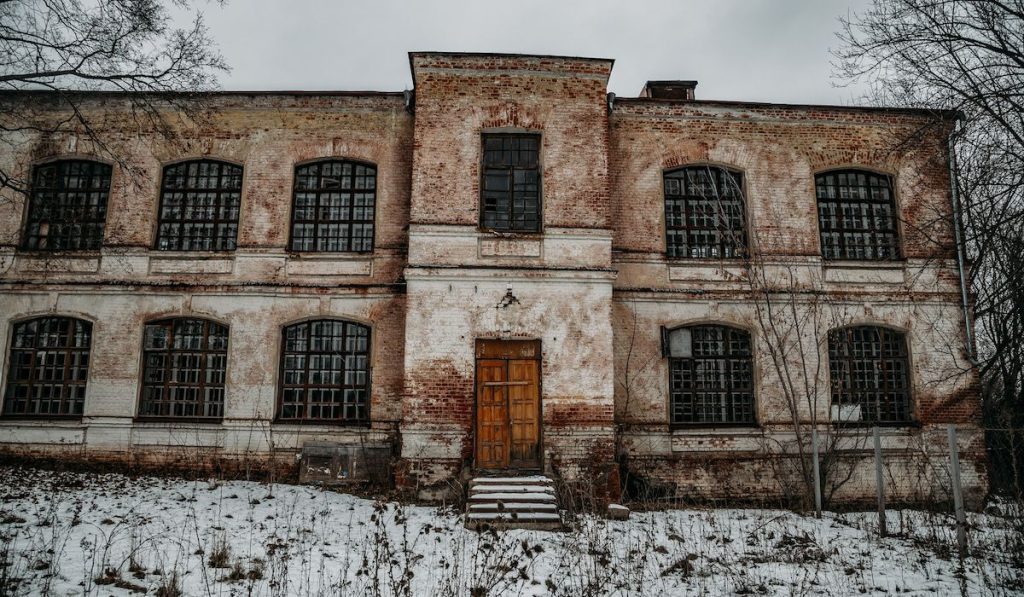
Those who were physically able to work helped raise the pigs, cows, horses, and chickens, harvested fruit and vegetable crops, made jams and jellies, baked bread, and even made coffins in the woodshop.
The coffins were often sold to the local mortuaries when the asylum didn’t need them. If an “inmate” didn’t have any family, they would be buried in the cemetery on the property.
If you want to visit Rolling Hills Asylum, you can experience historical tours, ghost tours, or even watch a horror movie in the creepy haunted rooms.
Willard Asylum For The Chronic Insane: Ovid, New York
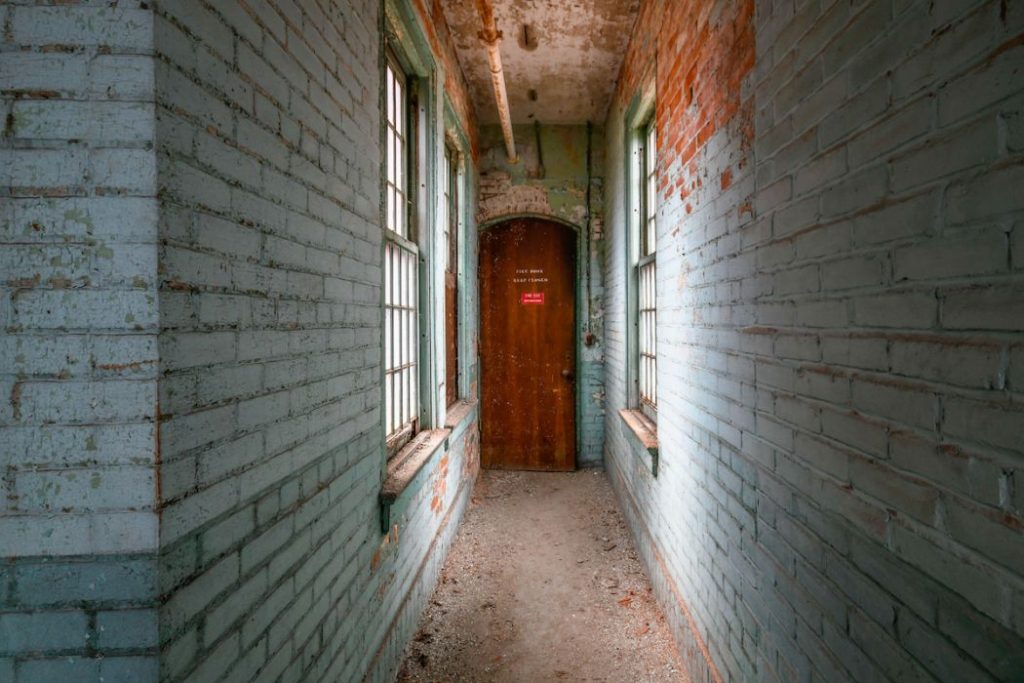
The Willard Asylum for the Chronic Insane opened in 1869, and the very last patient was transferred out of the institution in 1995.
The patients here were confined to the grounds. The Asylum had quite a few activities for patients to keep them occupied though. They had built a bowling alley, a movie theatre, a gym, and even a sewing room.
They also had less friendly activities for the patients. At the time, they were believed to be treatments, but the patients were given electro-shock therapy and ice baths.
Their home life before moving in wasn’t much better for the patients. One patient had been shackled in a room since their childhood before arriving at the asylum. Another was dropped off in a chicken crate.
The property is now used as a training facility for the Department of Correctional Facilities. Unlike some other asylums, it’s not open to the public for visits, but they do something a little different.
They put up a display periodically that shows off the contents of the suitcases the inmates arrived with. Hundreds of dusty suitcases were found in the attic, and the staff didn’t have the heart to throw them out. Instead, they catalogued and stored each suitcase and its contents.
This makes for an incredibly humanizing display of newspaper clippings, dolls, luggage tags, and handwritten notes.
Pennhurst Asylum: Spring City, Pennsylvania
Pennhurst Asylum opened in 1908 under a different name. It opened as the Eastern Pennsylvania State Institution for the Feeble-Minded and Epileptic (try saying that ten times fast!).
Pennhurst asylum was large. It had 3,350 beds. It was also notoriously understaffed. Too many patients and not enough staff made the asylum dirty and dangerous. An exposé was released in the 1960s that showed the terrible living conditions and brutal treatments from the staff.
In 1977 a judge ruled that the living conditions the patients were subjected to violated their constitutional rights. In 1983 there were nine employees charged for abuse to the patients. And on December 9, 1987, Pennhurst Asylum closed its doors because of a federal abuse lawsuit.
Now Pennhurst Asylum runs as a haunted house for Halloween.
Trans-Allegheny Lunatic Asylum: Weston, West Virginia
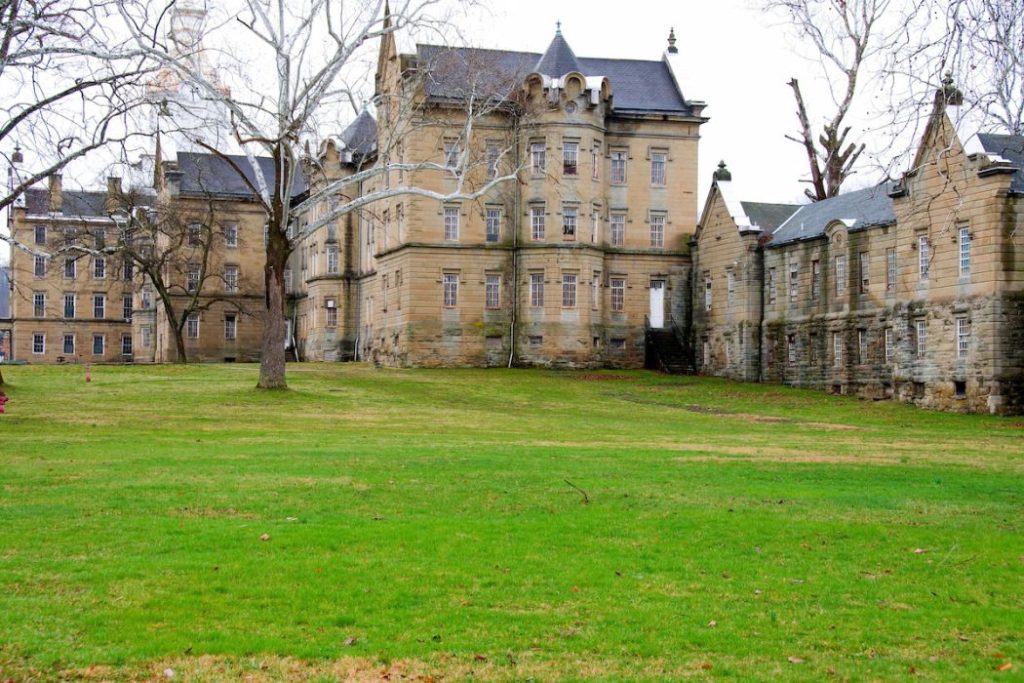
The Trans-Allegheny Lunatic Asylum opened in 1864 and was the largest hand-cut stone building in all of North America. The building sat on 666 acres of land. The asylum was self-sufficient, complete with a farm, waterworks, and a cemetery.
The asylum was only supposed to hold 250 patients. During the peak, there were almost 2,600 patients consisting of alcoholics, drug addicts, epileptics, and “defectives”.
Trans-Allegheny Lunatic Asylum closed in 1994 due to overcrowding, understaffing, and violence among patients. Not only did the patients attack each other, but they killed a female employee, dumped her body at the bottom of a staircase, and her body wasn’t discovered until two months later.
It’s not a great reputation for the asylum, but it makes for a great location for hauntings. Visitors say they can hear gurneys being moved and screams coming from the electro-shock therapy rooms, even when there’s nobody around.
The most haunted place is said to be the fourth floor. Visitors can hear screaming and loud banging noises and even a soldier who walks the halls.
There are quite a few different tours you can go on, depending on what you’re interested in. There are historical tours, day-time ghost tours, and 8-hour overnight ghost tours if spending a whole night in a haunted asylum is something that sounds fun.
St Albans Sanatorium: Radford, Virginia
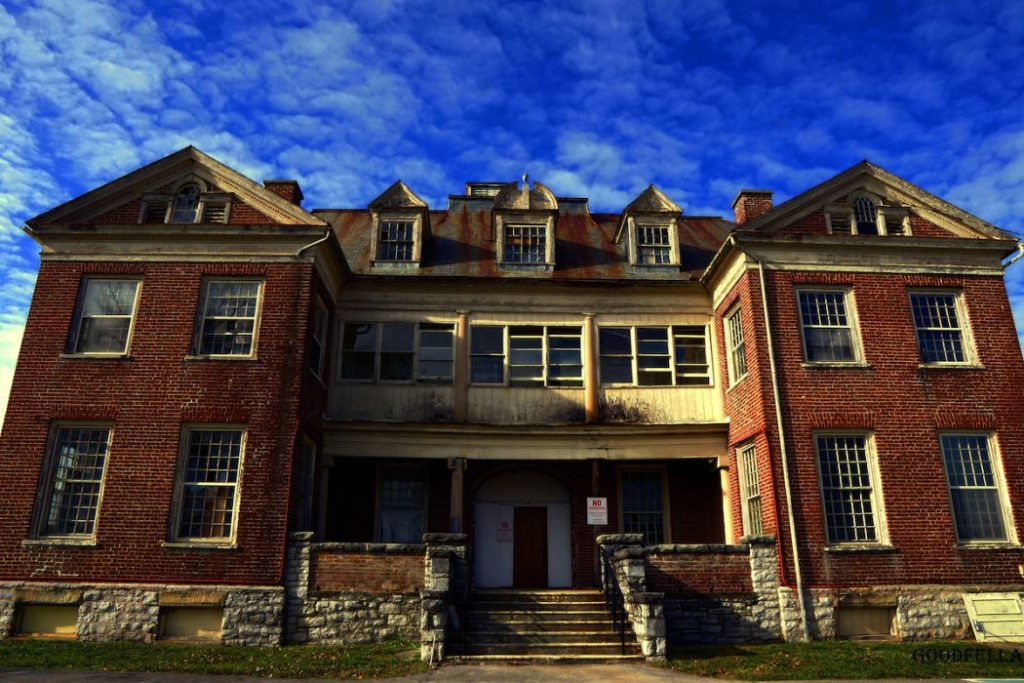
St Albans Sanatorium was originally St Albans Lutheran Boys School from 1892 to 1911. It was a terrible place to study.
In 1916 it became a mental hospital. A particularly brutal mental hospital that used electro-shock therapy, insulin coma therapy, lobotomies, and hydro-shock therapy.
The building saw even more suicides after it became a mental hospital, despite being advertised as “better” than the other sanatoriums because it had a rooftop garden, a bowling alley, and a small farm.
St Albans closed in the 1990s. It was severely understaffed, and for the 6,509 patients, there were only 48 staff members. If you go on any of the ghost tours here, you’ll find that not all the patients left when it closed. Full-bodied apparitions have been seen wandering the halls.
Waverly Hills Sanatorium: Louisville, Kentucky
Waverly Hills Sanatorium was built in 1910 to cope with an outbreak of tuberculosis or the “white plague”. The sanatorium was built on the hills surrounded by woods and was capable of holding 40-50 patients.
They weren’t mentally ill, and they weren’t subjected to electro-shock therapy, but patients here were put in extreme isolation. Tuberculosis was spread through germs in the air, so it was crucial that the infected stay completely isolated.
Several people died at Waverly Hills Sanatorium before a cure was found. An antibiotic treatment called streptomycin was the reason the sanatorium closed in 1961.
Waverly Hills Sanatorium is open for historical tours, and paranormal tours. If you’re lucky enough to visit around Halloween, the building is turned into a Haunted House, and the Waverly Hills Historical Society will sometimes bring in special guests to help with events.
Harlem Valley Psychiatric Center: Wingdale, New York

Harlem Valley Psychiatric Center originally opened as Harlem Valley State Hospital in 1924.
The state hospital was built on 900 acres of land and grew to have 80 buildings, a golf course, a bowling alley, a baseball field, a bakery, and even a dairy farm. The dairy farm was used to supply cream to the in-house ice-cream parlor.
During its peak, Harlem Valley Psychiatric Center had 5,000 patients and 5,000 employees. The hospital was one of the locations that pioneered “treatments” for the patients.
They were one of the first facilities to use insulin-shock therapy to treat patients with schizophrenia and compulsive disorders. They also practiced electro-shock therapy and lobotomies.
They continued these “treatments” until chlorpromazine (or Thorazine) was created. Once patients were treated by the anti-psychotic medication, the psychiatric center started seeing fewer and fewer patients. They closed their doors in 1994 due to a lack of patients.
The next plan for Harlem Valley Psychiatric Center was to turn it into a school. 500 acres were purchased by the Evangelical Assembly of Presbyterian Churches of America for $20 million. They immediately started removing weeds, putting up a soccer field, and removing the asbestos from the buildings.
The plan was to turn the 80 buildings into dining halls, dormitories, and classrooms, but the plan was shut down by the Occupational Health and Safety Administration of the Department of Labor. They fined the property owner for unsafe work conditions around the asbestos.
The $700,000 fine was paid, but the property has sat abandoned and will continue to sit abandoned until the asbestos can be safely removed.
Rockhaven Sanitarium: Glendale, California
What do you do when you see something you don’t like? You fix it. That’s exactly what psychiatric nurse Agnes Richards did. She worked in state-run asylums and didn’t like the torture the patients went through.
So in 1923, she founded her mental health facility to provide patients with a better option. This would be the very first woman-founded mental facility in America. It started as one small rock house, and eventually spread over three acres.
The facility was closed in 2006 after being sold in 2001. There was a decrease in profitability and Rockhaven Sanitarium could no longer support itself.
The peaceful conditions and beautiful scenery brought patients here, and on tours, you can see remains of fountains, stone pathways, arches, and cottages. Besides tours, the property sits mostly abandoned while city officials decide what to do with the historic site.
Medfield State Hospital: Medfield, Massachusetts
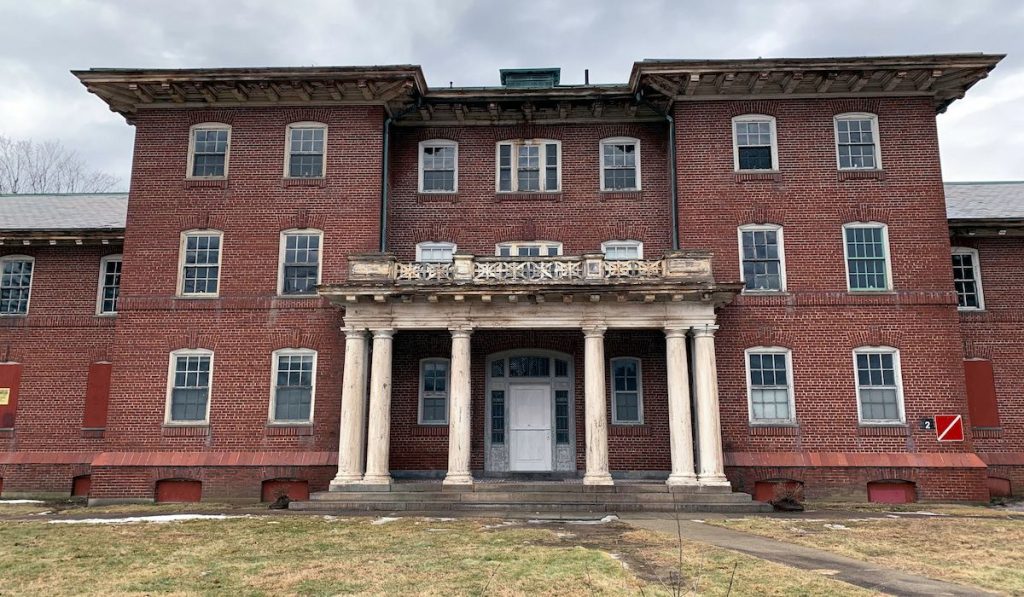
Medfield State Hospital opened in 1892. It was the very first asylum to use a Cottage Plan layout instead of the Kirkbride Plan.
The Kirkbride Plan had the administration office front and center, and it had hallways being built out in a v shape behind the office. The Cottage Plan consists of scattered buildings all over the property.
Medfield State Hospital was open for over 100 years before it closed in 2003. It was fully self-sustaining and saw thousands of patients in that time.
On the property is a cemetery, and until a Boy Scout made it his mission to find the names and dates of the deaths of everyone who was buried, only numbers were displayed to mark the gravesites.
This abandoned mental hospital is free to visit, there’s just one catch. You are not allowed to go into the buildings. You can visit the grounds, and follow the paths, but security officers patrol the area and enforce the rule not to enter the buildings.
Medfield State Hospital has been used in several films. If you’re a fan of suspense thrillers or horror movies, you might recognize the location from movies like Shutter Island, The Box, and Knives Out.
Taunton State Hospital: Taunton, Massachusetts
In 1854, this mental hospital opened as State Lunatic Hospital. It was the second state asylum to be built in Massachusetts. Several buildings were added to the Kirkbride Plan during the 1930s. These buildings consisted of juvenile facilities, crisis centers, sick wards, and group homes.
State Lunatic Hospital eventually became Taunton State Hospital, and it treated a few highly notorious patients. Among them are Anthony Santo and Jane Toppan.
Anthony confessed to murdering his cousins and another girl within three months. He said he murdered during “mad spells”. He was diagnosed with hallucinations and was sent to Taunton State Hospital.
Jane Toppan said she wanted to kill more people than any other man or woman who has ever lived. During her time as a nurse from 1885 to 1902, she confessed to thirty-one murders of her patients. She was found not guilty by reason of insanity but was sentenced to the state hospital for life.
Taunton State Hospital closed in 1975, relatively early compared to other mental hospitals. In 1994 the buildings were added to the National Register of Historic Places, and after that, the main building started falling into disrepair.
In 1999 the dome of the admin building completely collapsed. In 2006, a fire destroyed most of the Kirkbride Plan building, and it was completely demolished in 2009. The buildings that were erected in the 1930s are still standing, but the original building is completely gone.
Final Thoughts
Mental hospitals are one of the most well-visited sites for urban explorers. The history of torture and suicide, and the artistry in the architecture of the buildings make them extremely popular.
If you’re interested in ghost hunting at any of these abandoned mental hospitals, we have a beginner’s guide for that too!




